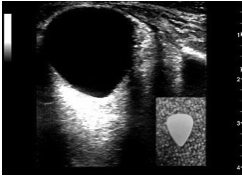Trauma in the pregnant patient
Considerations:
- What's good for mommy is good for baby!! Resuscitate mom!
- Viable fetus typically at 23-24 weeks (fundus above level of umbilicus)
- Trauma incidence in up to 7% of pregnancies
- leading cause of death in reproductive females
- leading non-obstetrics cause of death in pregnant women
Assess ABCDEs first like every trauma!!!
Airway considerations - prepare for difficult intubation (increased soft tissue edema, larger breasts, weight gain, increased aspiration risk)
Breathing - increased basal O2 requirement, fetus highly sensitive to maternal hypoxia (aim to keep Sp02 above 95%), Chest tube placement if indicated should be 1-2 intercostal spaces higher (almost in the axilla!!! a gravid uterus pushes everything superiorly)
Circulation - fluid and bloods as per ATLS, Placenta highly sensitive to vasopressors (be careful regarding placental ischemia), IVC compression from a gravid uterus can decreased CO by 30% --> decompress IVC by rolling patient to LL decubitus or just towards left side. Defibrillation of mother has small fetal risks (mother being dead is a higher risk to the fetus).
Complications:
Uterine Rupture: typically 2/2 direct abdominal trauma during 2nd half of pregnancy, Sx: maternal shock, abdominal distention/peritoneal signs, abnormal uterine contour on palpation, abnormal fetal lie, palpable fetal parts, fetal ascent, abnormal fHR tracing
Placental Abruption: most common cause of fetal demise in blunt trauma to pregnant mother, U/S not sensitive for this pathology, Sx: abdominal pain, uterine tenderness to palpation, vaginal bleeding (in up to 70%, may be absent if bleeding into retroperitoneum), uterine tonicity or contractions, fetal distress on monitor (decels, loss of variability).
Preterm Labor: 2x risk of preterm labor after trauma
Labs: CBC, BMP, T and S, d-dimer, fibrinogen, coags, Rh factor
Imaging: FAST, further imaging as indicated by injuries/suspicion of clinician. Imaging should not be delayed or deferred 2/2 concern for fetal radiation exposure in the trauma setting!!!!
If mom is stable, fetal monitoring/tocometry! think VEAL CHOP (variable = cord compression, early = head compression, accelerations = okay, Late = placental insufficiency.
Treatment Dispo:
- Nonviable fetus (less than 23-24 weeks of age, fundus below umbilicus) - treat as standard trauma patient, consider RhoGam 50 mcg for Rh negative patient to prevent alloimmunization
- Viable fetus (greater than 24ish weeks old) - consider RhoGam 300 mcg in Rh negative patient. Avoid pressors which can compromise uterine and placental bloodflow and secondarily fetal SpO2. Decreased pressure on IVF --> left lower decubitus position or roll patient 30% to left (like on a backboard if C-spine immobilized). Tocometry monitoring 4-6 hours if no further risk factors of fetal loss. Toco monitoring x 24 hours + if risk factors for fetal loss/placental abruption exist.
This leads me into the reason for this email: The resuscitative hysterotomy, formerly called the perimortem C-section, but name recently changed to reflect that this procedure is good for both mother and fetus! Potentially life saving for both as it decreases some burdens of pregnancy on maternal circulation, volume status, respiratory status, as well as it makes the newly delivered infant accessible for resuscitation, medication/fluid/blood administration, CPR, etc. A fetus inside a mother is much harder to resuscitate.
- Best outcome when performed within 4 minutes of Cardiac Arrest. (this patient is already dead at this point, you cannot make them worse, it is time to throw the kitchen sink)
- only attempt if gestation age is known at or above 24 weeks or if uterus appears gravid enough (fundal height above umbilicus).
- Bare minimum supplies necessary: prep stick, Scalpel, Large scissors, hemostat, sterile gauze and then hopefully a close by OR, OB surgeon (to put patient back together again), Pediatrics to resuscitate the fetus and ICU/trauma ICU setting for patient if they make it. A c-section or abdominal ex-lap tray is available in many ERs, and a emergency thoracotomy kit (in most EDs) will have most necessary tools. Suction, sterile garb and copious betadine also helpful.
I highly recommend watching some videos (Scott Weingart's: https://vimeo.com/59516684) as attached below but here are very basic steps:
Widely cleanse the entire abdomen with betadine (betadine bath)
midline vertical incision using scalpel from xiphoid to pubis
Sharp or blunt dissection through anterior abdominal wall until abdominal cavity is entered
retract abdominal walls laterally and bladder inferiorly to expose uterus
Make small vertical incision at uterine fundus, insert two fingers to and lift uterus wall away from fetus
use scissors to extend incision to the anterior reflection of the bladder, if encounter an anterior placenta, incise directly through it sharply. Be careful to avoid major vessels laterally.
Manually grasp and deliver fetus from uterus
Clamp and cut umbilical cord and hand off infant to Peds/NICU/2nd provider
Remove placenta with gentle traction. Do not yank.
Closure depending on maternal response to resuscitation. Closure should occur in the OR.
Remember everybody that this is all occurring during CPR!!! Keep those compressions going throughout, but efficacy of CPR should improve if this procedure is successful.
Sources:
https://coreem.net/core/peri-mortem-c-section/
https://wikem.org/wiki/Trauma_in_pregnancy
https://wikem.org/wiki/Resuscitative_hysterotomy
https://lifeinthefastlane.com/ccc/perimortem-caesarian-section/













